Welcome to the all-new first edition of the ODA Division of Animal Health Quarterly newsletter!! In this newsletter you will be able to hear news and stories from both our office and field staff about the exciting things that we are working on and do every day! Animal Agriculture is a vital part of Ohio’s economy and we are here to promote and engage in protecting it through our programs and activities. The goal of this newsletter is to spark interest and conversation about what we do every day to promote our animal industries in the great state of Ohio. |
|
 |
Remembering Dr. Forshey
The years 2020-2021 were full of changes and life altering events for many individuals. Among those was the passing of Dr. Tony Forshey, who was the State Veterinarian and Chief of our division since 2006. Prior to ODA, Dr. Forshey was a swine veterinarian for 27 years in northwest Ohio. Dr. Forshey was a leader in animal agriculture and was very active in numerous organizations across multiple agencies. He received many accolades and awards in his time as a veterinarian. You will be hard pressed to meet a producer or veterinarian in Ohio who does not have a story to share about knowing Tony and their interactions with him. He was an animal advocate and we strive to continue his legacy through our actions every day.
Tony Forshey Obituary (1952 - 2021) - Hebron, OH - Legacy Remembers
Dr. Dennis Summers has stepped into the roll of State Veterinarian as well as the Director of the Animal Disease Diagnostic Laboratory (ADDL). Dr. Summers has been with ODA since 2014. During the past 8 years he has filled the positions of field veterinarian with the Division of Meat Inspection, field veterinarian with the Dangerous Wild Animals Program, Interim chief of the Division of Meat Inspection, and the Assistant State Veterinarian with the Division of Animal Health. (ODA Director Announces Dr. Dennis Summers as Ohio’s State Veterinarian | Ohio Department of Agriculture). Dr. Kristy Shaw is the new Assistant State Veterinarian, having previously held the role of emergency preparedness and disease programs coordinator. She has been with ODA since 2019. A new position has been created as well – Chronic Wasting Disease (CWD) Epidemiologist and that has been filled by Dr. Leeza Bercaw.
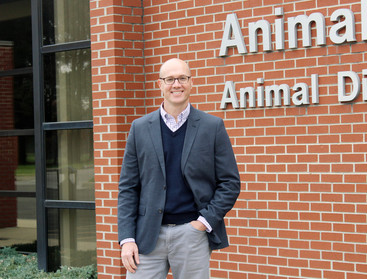 Dr. Dennis Summers
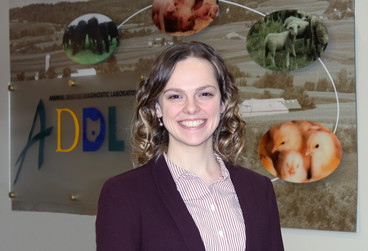 Dr. Kristy Shaw
After spending 22 years working as a field veterinarian in Southwest Ohio for ODA, Dr. Robert Carey will be retiring April 29th. Dr. Carey graduated from The Ohio State University College of Veterinary Medicine in 1972. After graduating from OSU, Dr. Carey was in food animal private practice for 28 years in Highland County, where he still lives on his sesquicentennial family’s farm. Dr. Carey joined ODA’s Division of Animal Health in 2000. He has been married for 52 years, has 3 sons, and 6 grandkids. Thank you for your service Dr. Carey- you will be missed!
Dr. Bob Carey
 Dr. Carey's sesquicentennial family farm
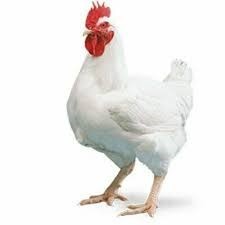 |
|
Dr. Kristy Shaw, Assistant State Veterinarian
|
Highly Pathogenic Avian Influenza (HPAI) was detected in a backyard chicken flock in Brown Township, Ohio in western Franklin County. Samples from infected chickens were tested at ADDL and confirmed at the National Veterinary Services Laboratory in Ames, Iowa on March 29. State and Federal Officials quarantined the affected premise and the birds on the property were depopulated to prevent the spread of disease. Surveillance will be conducted in a 10 kilometer zone around the infected premise by state and federal partners.
HPAI is a foreign animal disease that is highly contagious, extremely infectious, and spreads rapidly from flock to flock. Some strains of avian influenza are also zoonotic (transmitted from animals to people). Wild birds and waterfowl are often reservoirs for this disease and carry it throughout the US as they follow their migratory pattern.
HPAI virus was detected in the wild bird population in the United States in January 2022 and in domestic poultry in February 2022. It has been detected in wild birds, as well as commercial/backyard poultry in more than 25 states. USDA’s HPAI Resource Page provides up to date information on where HPAI has been confirmed in the US.
Ohio producers are encouraged to be alert and practice enhanced biosecurity. The Defend the Flock Program with USDA has great information on biosecurity for backyard producers. If you have poultry that are showing clinical signs of sickness including lethargy, sudden death, and decreased water consumption – please call ODA immediately. We will walk you through what to do and how we can help.
If you suspect HPAI in your flock, please call the Division of Animal Health at 614-728-6220
If you have questions about sick wild birds, please call the Ohio Department of Natural Resources (ODNR) at 1-800-WILDLIFE
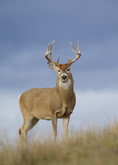
News From the Office
Captive Deer Program update – Dr. Leeza Bercaw, CWD epidemiologist
|
Did you know that Ohio has a large captive deer (cervid) industry? There are captive deer farms in 77 of the 88 counties in Ohio. These farms are all licensed by ODA. Ohio also has a nationally approved Herd Certification Program for captive cervids. The program is a cooperative effort with the U.S. Department of Agriculture Animal and Plant Health Inspection Service (APHIS). It is a voluntary program that is available to all cervid herds in the state. The goal of the program is to control the incidence and prevent the interstate spread of Chronic Wasting Disease (CWD).
The program has requirements for fencing, animal identification, inventory and movement records, inspections, reporting of escapes and CWD testing. All enrolled animals that are 365 days or older that die for any reason are required to be tested for CWD. The CWD testing provides essential disease surveillance information for Ohio. A participating herd will advance in status each year that it meets the program standards. After five years of CWD status, a herd achieves certified status and meets the CWD requirements for interstate movement. Interstate movement from only certified status herds reduces the risk of spreading CWD.
ODA Division of Animal Health works closely with USDA APHIS and cervid producers to have a successful program and a healthy captive cervid population. For more information regarding the program or for enrollment information, please call the Ohio Department of Agriculture or visit our website.
Livestock Sales and Markets - Dr. Ellen Yoakam, Field VMO and Molly Roberts, Animal Health Inspector
There are many regularly occurring livestock sales and markets throughout Ohio. ODA Animal Health as well as USDA Veterinary Services field staff spend time at these events for several reasons. Our veterinarians and inspectors work with market veterinarians and market staff to maintain biosecurity and health of the animals that are moving through markets. Depending on the species and purpose of the animals, testing may be required to be done before or at the time of sale. We also perform surveillance testing at sales and markets to gain further information about the presence or absence of diseases in Ohio. Livestock dealers are those individuals who are buying and selling livestock in Ohio and this activity is also monitored and audited routinely.
One main focus that we have whenever animals are moving is Animal Disease Traceability (ADT) which relies heavily on proper animal identification. Regulatory staff monitors the animals going through sales to ensure that they are properly identified (ear tags, back tags, lot ID, etc.) and that accurate records are kept. If an animal disease would be found, the ability to trace the origin and prior locations of diseased or exposed animals is critical to containing the disease. To further promote ADT, ODA is currently distributing FREE (provided by USDA) Radio Frequency Identification tags to veterinarians and producers for replacement cattle in Ohio.
See this link for further information: Free Radio Frequency Identification (RFID) Tag Information | Ohio Department of Agriculture
For more information regarding official identification for Sheep and Goats regarding Scrapie call 1-866-USDA-TAG.
What's Up Doc!?
Dr. Angela Rospert, Field VMO
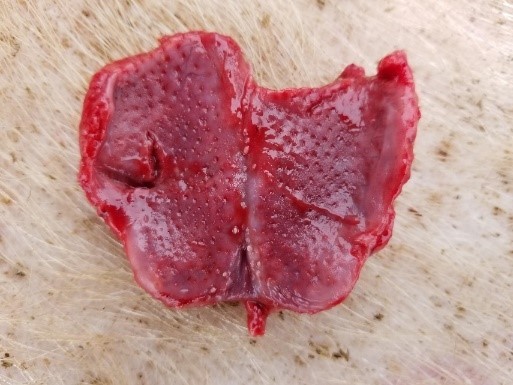 Picture of Pig Tonsils
During the colder months of the year one of my primary job responsibilities is collecting surveillance samples for ASF and CSF. African Swine Fever (ASF) and Classical Swine Fever (CSF) are two concerning foreign animal diseases that affect swine. We currently do not have either of these diseases in the US and we want to keep it that way! Collecting surveillance samples is important as it helps to monitor for these diseases and provides data to our international trading partners that the US continues to be free of ASF and CSF. We have about 3-4 field staff that are primarily responsible for collecting and submitting the samples each year.
Collecting these surveillance samples consists of removing tonsils that are located in a pig’s throat region and submitting them to an approved laboratory that conducts ASF and CSF testing. We collect tonsil samples from the small number of pigs that for one reason or another arrive dead at a processing facility or are condemned at slaughter. These animals are considered at “higher risk” for ASF and as such make good sample subjects. Collecting the tonsil tissue is not overly difficult but sometimes we do face challenges of manipulating these animals in a way that allows access to their tonsils. We generally try to complete our sample goal before the weather gets too hot as warm weather can cause deterioration of samples. While it can be challenging collecting samples on extremely cold days, when the temperature becomes too warms it causes a smelly job to become even more stinky!
|